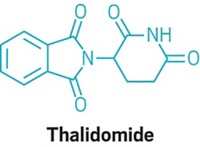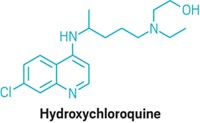Advertisement
Grab your lab coat. Let's get started
Welcome!
Welcome!
Create an account below to get 6 C&EN articles per month, receive newsletters and more - all free.
It seems this is your first time logging in online. Please enter the following information to continue.
As an ACS member you automatically get access to this site. All we need is few more details to create your reading experience.
Not you? Sign in with a different account.
Not you? Sign in with a different account.
ERROR 1
ERROR 1
ERROR 2
ERROR 2
ERROR 2
ERROR 2
ERROR 2
Password and Confirm password must match.
If you have an ACS member number, please enter it here so we can link this account to your membership. (optional)
ERROR 2
ACS values your privacy. By submitting your information, you are gaining access to C&EN and subscribing to our weekly newsletter. We use the information you provide to make your reading experience better, and we will never sell your data to third party members.
Biological Chemistry
Thalidomide Defects Possibly Tied To Blood Vessel Loss
An analog of the former morning sickness drug is shown to interfere with vascular growth during limb development in chick embryos
by Jyllian N. Kemsley
May 18, 2009
| A version of this story appeared in
Volume 87, Issue 20

Thalidomide, once a popular treatment for morning sickness, causes a variety of birth defects, most commonly malformed limbs. A research group led by Neil Vargesson of the University of Aberdeen, in Scotland, has uncovered new details of the mechanism by which thalidomide causes limb deformities (Proc. Natl. Acad. Sci. USA, DOI: 10.1073/pnas.0901505106). The team exposed chick embryos to four thalidomide metabolic by-products or analogs. Three of the compounds showed no effects on embryo development, but the fourth, a fluorinated thalidomide analog called CPS49, destroyed newly formed blood vessels. When the researchers exposed embryos to CPS49 during a period when limb vasculature was rapidly developing, the embryos formed severe wing defects. Other embryonic regions with more mature vessels continued to grow normally, despite a temporary halt to vessel growth. Pregnant women who took thalidomide decades ago likely did so during embryonic limb development, which occurs early on during pregnancy at roughly the same time as the onset of morning sickness. Vargesson and colleagues are continuing to investigate whether the effects on developing vasculature could be tied to thalidomide-induced birth defects in other parts of the body.





Join the conversation
Contact the reporter
Submit a Letter to the Editor for publication
Engage with us on Twitter